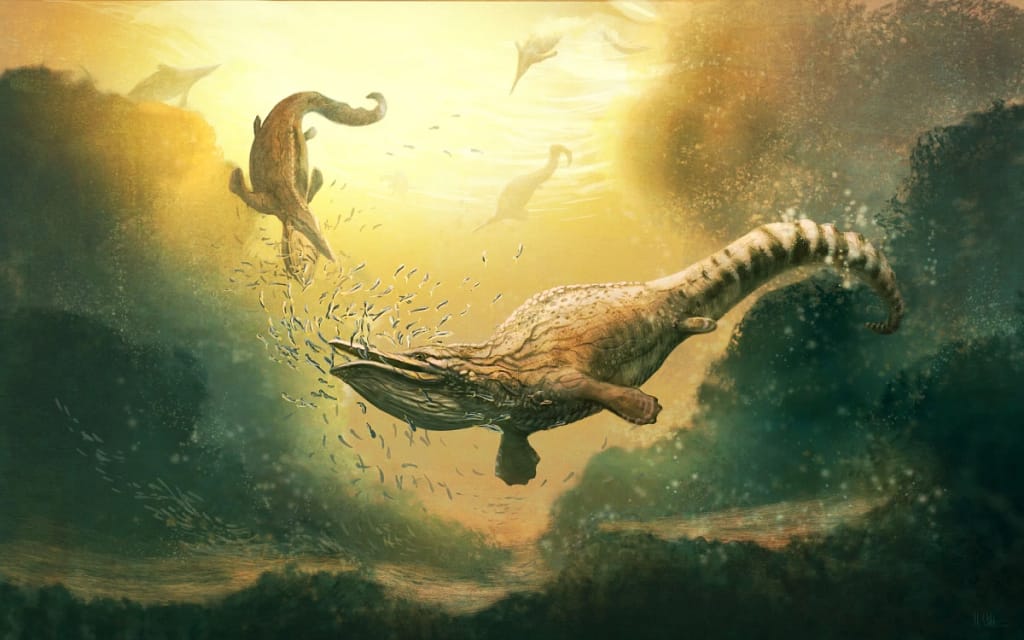
Hupehsuchus and Convergent Evolution
Introduction
In ancient times, well before the existence of whales, a remarkable marine reptile known as Hupehsuchus nanchangensis employed a unique feeding technique. This reptile lived approximately 248 million years ago, during a period of intense changes following a catastrophic mass extinction.
The Modest Filter-Feeder
Hupehsuchus, in contrast to the immense blue whale, was relatively small, measuring only around three feet or one meter in length. It possessed a slender snout, a toothless mouth, limbs for steering, and a broad tail for propulsion.
Adapting to Diet
The reptile's elongated snout consisted of flexible bones, enabling it to open its mouth widely. This feature proved valuable for consuming substantial amounts of water containing minute prey known as zooplankton.
A Unique Filter Mechanism
Unlike modern baleen whales, which have keratin-based plates in their mouths, Hupehsuchus did not possess such structures in its fossils. However, researchers identified grooves and notches on its jaw edges, suggesting a possible soft tissue mechanism akin to baleen.
Expert Insights
Collectively, these findings indicate a soft skin pouch surrounding the mouth and throat, reminiscent of modern baleen whales, along with a filtering device hanging from the jaws. However, the precise 'baleen' and skin are not preserved,
explained paleontologist Mike Benton from the University of Bristol.
Feeding Habits
Hupehsuchus' feeding strategy resembled that of present-day bowhead and right whales. They filter-feed near the ocean surface, employing open mouths to capture small prey from the water.
Convergent Evolution
This feeding method illustrates the concept of convergent evolution, where unrelated organisms develop similar traits due to shared environments.
Fascinating Observations
Paleontologist Long Cheng, the lead author of the study, remarked, The more distant the relationship between two creatures, the more intriguing this phenomenon becomes.
Surviving Catastrophe
The Permian Period concluded with a catastrophic volcanic event that triggered Earth's worst mass extinction, wiping out nearly 90% of species. However, life rebounded rapidly, and innovative creatures like marine reptiles filled the ecological voids left behind.
Unveiling Ancient Secrets
Although Hupehsuchus fossils were initially identified in the 1970s, the lack of intact cranial remains impeded a comprehensive understanding. Recent discoveries, including well-preserved skull fossils, have shed new light on this ancient reptile's characteristics.
Diverse Filter-Feeders
Several marine creatures have embraced various filter-feeding techniques. Whale sharks, the largest fish in the present day, utilize their gills to capture food from water. Ancient marine reptiles like Paludidraco and Morturneria also exhibited filter-feeding attributes. Titanichthys, a heavily armored fish, might potentially hold the title of the earliest-known vertebrate filter-feeder, predating Hupehsuchus by over 100 million years.
Speculations
Paleontologist Cheng speculated, Hupehsuchus might hold the distinction of being the smallest vertebrate filter-feeder.



